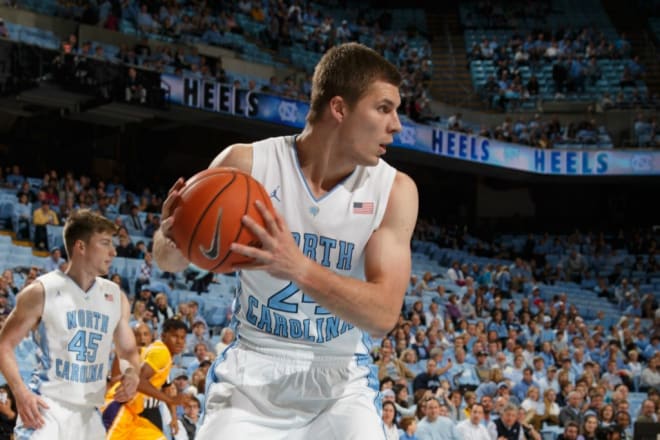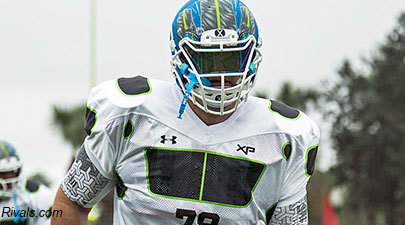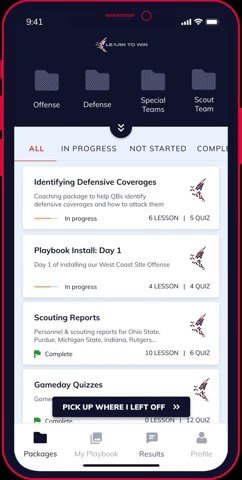How South Carolina is using Learn to Win to enhance virtual learning
The Learn to Win program wasn't initially developed specifically for football coaches dealing with the effects of a global pandemic.
But, as the COVID-19 outbreak continues to increase the need for various types of virtual-learning in all walks of life, the application has become increasingly useful for coaches looking to connect with their players.
The South Carolina football program is one of multiple FBS schools to now utilize the technology with the Gamecocks signing up with Learn to Win last week.
"You're able to interact, you're able to send test questions where the players can get immediate feedback," head coach Will Muschamp said via teleconference Monday. "If we're quizzing them on a day one install, on a certain front, a certain run game, a certain protection, we're able to interact with our players and they're able to see if the answer was correct or not correct, they're able to see what they should have answered. But it's been really beneficial. That's been a good part of the learning process."

So, what exactly is Learn to Win?
Like any new technology, the application started with a problem and a desire to fix it.
When co-founder Sasha Seymore joined the North Carolina basketball program as a walk-on in 2014, he quickly learned the difficulties of absorbing the massive amounts of plays and concepts that it took to be successful at that level.
As much as Seymore loved fulfilling a dream of playing for the Tar Heels—Seymore says he would still run through a brick wall for coach Roy Williams—he began to wonder if there were more efficient ways for coaches to help players learn.
Seymore expressed that thought to his roommate Andrew Powell, who happened to have a background working in Silicon Valley with Coursera, an online learning platform.
Seymore and Powell eventually graduated from UNC and the concept remained just an idea, but they stayed in touch and ultimately, with a little fate, were both accepted to grad school at Stanford.

While Powell had the tech background and Seymore had the basketball knowledge, they needed someone to provide expertise on if the application would successfully pair with football.
Through a mutual friend, Seymore got in touch with former Tar Heel offensive line lineman Tommy Hatton, whose football career was cut short by concussions. If that name sounds familiar, it's because Hatton was at one time a South Carolina recruiting target who heavily considered the Gamecocks.
Hatton, a standout center, felt strongly about the product and the trio founded Learn to Win as they attempted to leverage the technology already seen in learning programs such as Rosetta Stone, Coursera or Duolingo and apply them to sports on an easily assessable, interactive platform.
The group convened in Chapel Hill during the summer of 2018 to build out the original version of the program with North Carolina basketball and football as their test subjects.
The idea was to replace, or supplement, old-school paper playbook learning and long video sessions with short interactive 3-5 minute microlearning lessons that coaches could easily customize to their needs.
"It's very similar to a Rosetta Stone or Duolingo, where a coach could say, play a video, ask a quiz question on it, ask two or three more quiz questions and send that directly to their players' phones and then get analytics on, here's what my players understand and what they don't," Seymore explained. "So you're taking those kind of active learning concepts and then making it easy for coaches to build out those very structures lessens and very structured quizzes as easily as they would build a PowerPoint."

Learn to Win eventually launched to the public in January 2019 when it was featured as a learning tool for prospects at the Under Armour All-America game.
Since that time, they've partnered with over 100 programs, mainly high schools, but have also worked with college programs like Michigan and West Point, using the feedback gained to continue to improve the experience.
The technology has also proved successful in other learning applications as they have a contract with the Air Force and even were set to work with Chick-Fil-A to help them train employees before the pandemic put that venture on hold.
But with the coronavirus forcing football coaches to get creative in how they reach their players, multiple other programs have joined that list this spring, according to Greg Russo, a former high school coach and friend of Hatton's who is the company's Head of Football Sales.
"South Carolina is relatively new," Russo said. "We've been onboarding a lot of new teams, especially with coaches having some more time to kind of look at some things right now. They're like everybody else right now, they're trying to figure out what's the best way we can teach and quiz our players.
"They had looked at a couple of different tools. I think they had seen that maybe North Carolina had used us and Ole Miss had used us and they wanted more information. We kind of talked and showed them the platform and they were pumped pretty quick. They wanted to get on right away and get moving. They're already rolling out quizzes and lessons to their players."
While coaches have always had the combination of paper quizzes, the whiteboard, and film as learning tools at their disposal, Learn to Win combines all three into one space, allowing the quizzes to implement visual and interactive learning and place them on smartphones and tablets, which the players already enjoy being on in the first place.

The distance-learning that coaches are currently implementing has created a new need for the technology, but Seymore hopes coaches will continue to use it throughout the year.
"The most traditional usage of what most programs do is this three-pronged preseason install, playbook learning type of stuff, where they build out interactive lessons and quizzes that they can shift to their players then they'll build out interactive scouting reports once they get into the season," Seymore said.
"And then a lot of coaches were doing these pregame quizzes on paper that they can then shift over to our platform and instead do quizzes that they send directly to the players and make it interactive on their phones or tablets and get instant analytics on what they understand and what they don't, so they can teach directly to it."
A former coach himself, Russo says it's just another tool for coaches looking to make efficient use of time that's limited by the NCAA and gain a greater knowledge of what they need to focus on when teaching their kids.
"You can either find out a kid doesn't know something when they blow a coverage in a game and give up a touchdown or you can find out on a quiz on a Tuesday that they don't understand this concept and [then] you're fixing it," Russo says. "I think that's the biggest thing about our platform that you're seeing now."
